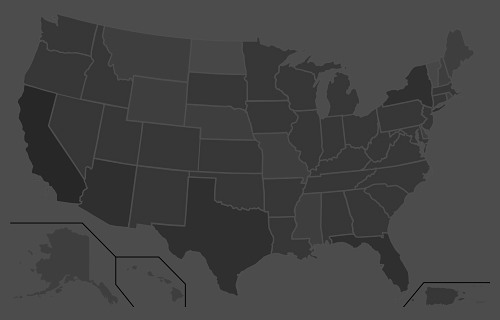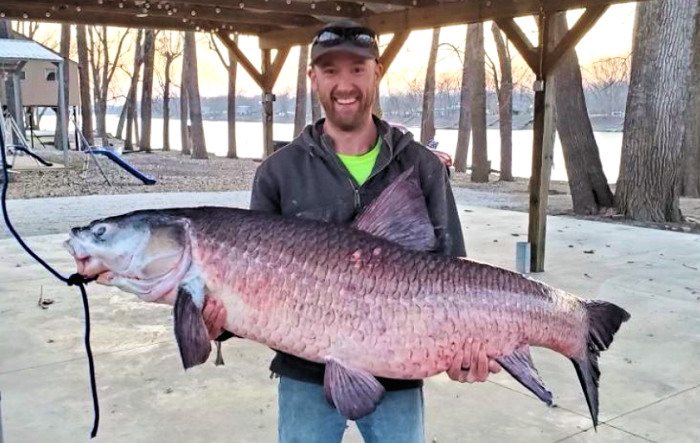“Our added winter moisture and active calling period led to a very long nesting and hatching season, starting in late April and extending into early summer, with chicks hatching as late as early July,” O’Dell said. “From a population standpoint, we are out of a deficit for the first time since 2001-2002. Quail are starting to pop up in places they haven’t been seen in a while.
“If you’ve never had the chance to experience what Arizona quail hunting built its name on, then this would be the year to get out and enjoy it.”
Meanwhile, hunters should note that the season for Mearns’ quail doesn’t begin until Dec. 4. It’s summer rainfall that plays a key role in nesting success and population numbers of this species. After a spotty and relatively weak monsoon across southern Arizona, these birds are likely to be abundant only in pockets that received sufficient precipitation this summer.
A valid Arizona hunting or combination hunt and fish license is required for all hunters 10 and older. Those hunters under 10 must either have a valid hunting or combination hunt and fish license, or be accompanied by an adult who possesses a valid hunting or combination hunt and fish license. Licenses can be purchased online or at license dealers statewide. A youth combination hunt and fish license (ages 10 to 17) is $5.
The general bag limit is 15 quail per day in the aggregate, of which no more than eight may be Mearns’ quail (when the Mearns’ season opens Dec. 4). The general possession limit is 45 quail in the aggregate after opening day, of which no more than 15 Gambel’s, scaled or California quail in the aggregate may be taken in any one day. After the opening of the Mearns’ season, the 45-quail possession limit may include 24 Mearns’ quail, of which no more than eight may be taken in any one day.
More quail-hunting information can be found on the department’s website at https://www.azgfd.com/Hunting/. Another resource for both new and experienced hunters alike is “An Introduction to Hunting Arizona’s Small Game.” Written by Randall D. Babb, the 196-page, full-color book covers where and how to hunt small game birds (like quail), squirrels, rabbits, ducks and geese. It also includes how to prepare and cook your harvest, with illustrations and recipes. The book can be ordered for $16.95 at www.azgfd.gov/publications.
Finally, hunters should check out O’Dell’s techniques for field-dressing quail at https://www.youtube.com/watch?v=3gRwZAcWzzk.
####
Publishers Notes: OUT OF STATE HUNTERS, FISHERMEN & OUTDOOR ENTHUSIASTS; Due to the Covid 19 pandemic, there could be limitations for OUT of STATE hunters, fishermen and other outdoor enthusiasts to include a 14-day quarantine requirement or negative COVID-19 testing alternative. Please check with the State's Department of Natural Resources BEFORE you travel or apply for the 2020 Fall Hunts.
Disclaimer: The views expressed on this site are that of the authors and not necessarily that of TBC Press
Missouri Angler Catches 112-Pound Invasive Black Carp
Submitted by: TBC Press
Posted on: 03/12/21
The Backcountry Press
The country's premier daily HUNTING, FISHING & OUTDOOR news in the USA and around the globe. Read whats happening in your neck of the woods & beyond.
© 2020 TBC Press - All Rights Reserved Website Design by:
News # 14265
According to MDC, black carp are an invasive fish from Asia that eat mussels and snails. The fish damage populations of native mollusks, many of which are critically endangered. There is a strong possibility the species is becoming established, with breeding populations, on our continent.
Black carp have been found in the Mississippi River system, including the Osage River, where in 1994 about 30 reportedly escaped from a fish farm during a high-water event and entered that river.
Most of the black carp in the United States were introduced to control problematic snail populations in commercial fisheries, and these individuals are presumably sterile. Yet fertile individuals can be present, too. Given that black carp can live for 15 years, even the sterile individuals can present a serious long-term problem for native mollusk populations.
“If anglers happen to catch black carp, or any invasive fish, while fishing in Missouri waters, it’s imperative to contact their local conservation agent,” explained MDC Fisheries Programs Specialist Andrew Branson. “That way, our Fisheries staff can be notified and monitor the spread of these destructive species.”
The black carp caught by Hughes is currently being studied by the United States Geological Survey.
“It’s a little disappointing, as I don’t think I’ll ever catch a fish that big again,” joked Hughes. “But at least it’s one less invasive fish in Missouri waters.”
Black carp appear similar to the common grass carp, but the black carp is darker, though not truly black, and some report the adult black carp have a relatively narrower snout. It also has large pharyngeal teeth, or throat teeth, that resemble human molars. These teeth are used to crush the shells of mollusk and prey.
For more information on black carp, visit the MDC website at https://short.mdc.mo.gov/ZRa. To learn more about invasive species, visit https://short.mdc.mo.gov/ZeV.
Image courtesy of MDC
####
Publishers Notes: Our country is still battling COVID-19. To avoid the spread of this virus and continue to enjoy outdoor activities, ALL outdoor enthusiasts (man, woman, child) should follow the guidelines set by nps.gov. These guidelines include; social distancing, the Leave No Trace principles, including pack-in and pack-out, to keep outdoor spaces safe and healthy.
In Missouri, an Osage County man got a surprise last week after catching a 112-pound invasive black carp from the Osage River.
The Missouri Department of Conservation (MDC) has listed black carp on the Prohibited Species List – a list of species that may not be imported, exported, transported, sold, purchased, or possessed alive in Missouri without written approval of the director.
Jesse Hughes of Bonnots Mill was originally catfishing with friends March 4 when he hooked into the fish.
“We hooked into it and knew it was something big, but I originally thought it was a catfish,” Hughes recalled. “It was the first I’d heard of a black carp. I didn’t know anything about it, so this has been quite the learning experience.”













